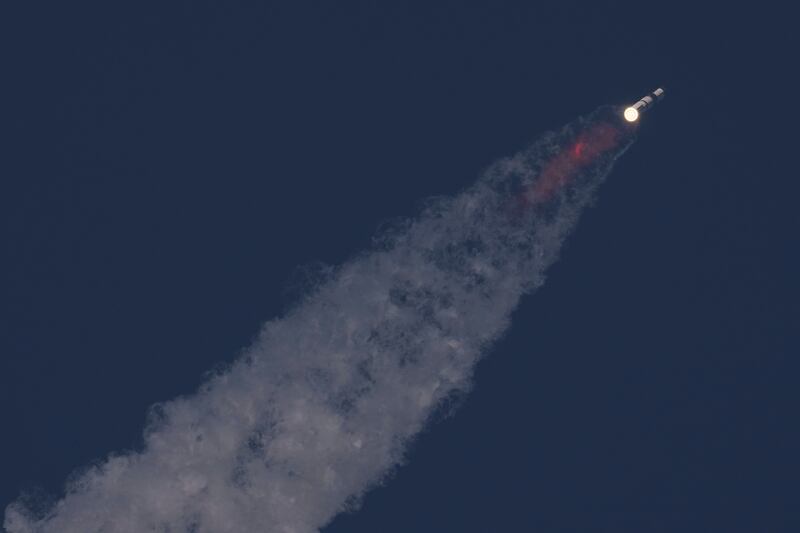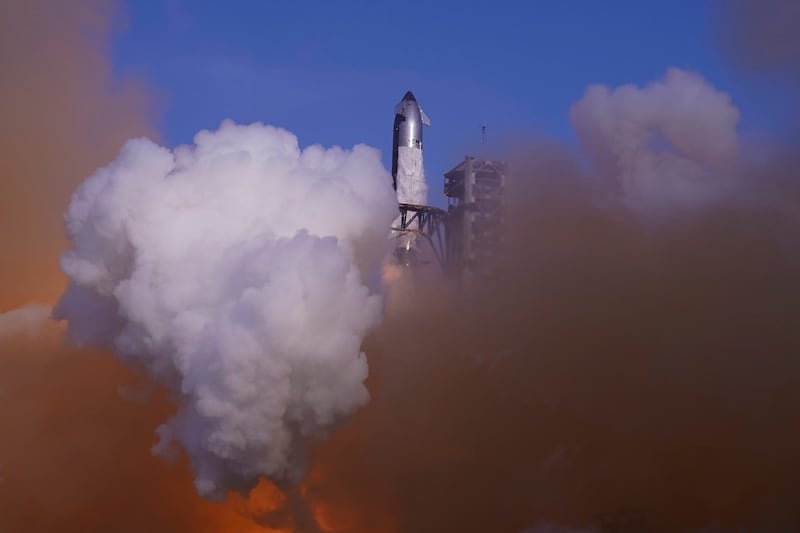- Tuesday's test flight of SpaceX's Starship spacecraft ended in a pair of explosions.
- In spite of the fiery results, SpaceX owner Elon Musk said the test was a success.
- SpaceX just received clearance to greatly increase test flights from its Texas facility.
“Rapid unscheduled disassembly” has become a term of art in SpaceX’s accounting of the fiery explosions that have marked recent test flights of the private space company’s massive Starship/Super Heavy rocket booster package.
Tuesday evening marked the third straight such occurrence when, in separate incidents, both the Starship spacecraft and Super Heavy rocket exploded before returning to the surface following a 5:37 p.m. MDT launch from SpaceX’s Boca Chica, Texas launch facility.
The Starship spacecraft successfully separated from the Super Heavy rocket and the capsule even made it to space, outpacing the previous eight test flights. But the booster exploded about six-and-a-half minutes into the mission as it was executing a “landing burn” that requires a re-firing of engines to allow for a controlled landing of the reusable component. While SpaceX had successfully recovered its Super Heavy booster on the last two test flights, Tuesday’s mission called for a hard splashdown in the Indian Ocean.
The Starship capsule encountered issues shortly after it began its reentry into Earth’s atmosphere when it began leaking fuel, spinning out of control and eventually exploding.

In a social media post, SpaceX owner Elon Musk said in spite of the explosive endings, the ninth Starship test flight was a success and one that will help advance development of the program.
“Starship made it to the scheduled ship engine cutoff, so big improvement over last flight!,” Musk wrote on X. “Also, no significant loss of heat shield tiles during ascent. Leaks caused loss of main tank pressure during the coast and re-entry phase. Lot of good data to review.”
While the Super Heavy booster rocket performed to expectations on the previous two test flights, the Starship capsule exploded less than 10 minutes after launch of both the seventh and eighth missions.
Musk also noted that SpaceX is poised to increase the pace of Starship/Super Heavy test launches from its Texas site, which had previously been limited to five per year by the FAA. But earlier this month, the agency gave SpaceX the go-ahead for 25 launches and up to 50 landings each year.
“The FAA has determined that modifying SpaceX’s vehicle operator license to support the increased launch and landing cadence would not significantly impact the quality of the human environment,” the FAA wrote in its decision.
What’s the goal of the Starship system?
Under development for years, SpaceX’s Starship system consists of the 164-foot tall Starship spacecraft and the 233-foot tall Super Heavy rocket booster. The massive booster is powered by 33 individual Raptor engines that, in unison, create nearly 17 million pounds of thrust. The methane-powered system dwarfs the former record held by NASA’s Space Launch System, which flew a successful test flight last November and can achieve almost 9 million pounds of thrust.
SpaceX describes Starship as “a fully reusable transportation system designed to carry both crew and cargo to Earth orbit, help humanity return to the moon, and travel to Mars and beyond.” As SpaceX does with its workhorse Falcon 9 rockets, the Starship system is designed for booster return and reuse capabilities. The company has been successfully recovering Falcon 9 boosters for nine years, employing a remote controlled, floating landing pad typically deployed off the coast of Florida.

Starship is capable of lifting as much as 250 tons into space and could accommodate 100 people on a potential trip to Mars.
SpaceX has its own plans for putting the Starship to work once it becomes operational, ferrying satellites to low Earth orbit and potentially carrying paying passengers to space.
But NASA is also vested in successful development of the giant rocket system, having struck a multibillion-dollar deal with SpaceX in hopes of making Starship part of the Artemis moon mission. Starship’s upper stage spacecraft would be used to carry astronauts from lunar orbit to the surface of the moon but the NASA contract stipulates that SpaceX must first prove its abilities by performing a successful unmanned lunar landing.


